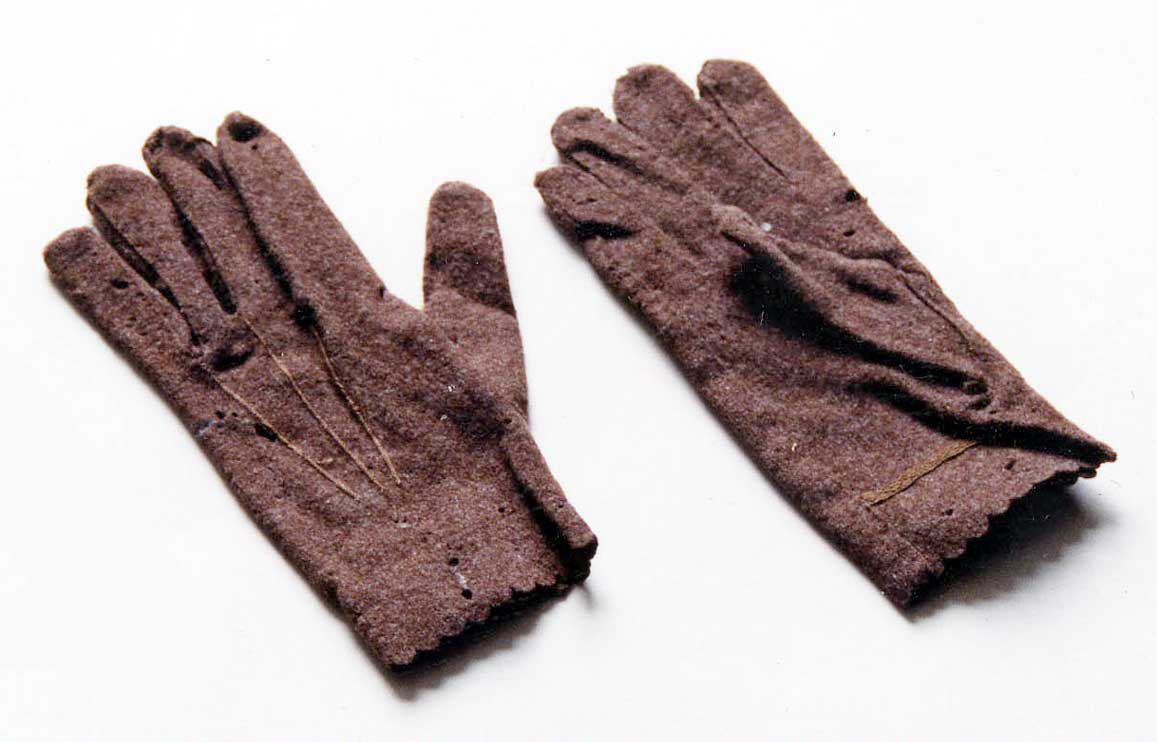The Rise of the Trade Unions
Trade unions made an early appearance in the hosiery industry. An association of framework knitters in the midland counties existed as early as the 1770s.

Woollen gloves c.1850.
At this period they were closely connected with the friendly societies that developed in the towns and villages throughout the region. In those early years the unions were a spontaneous response to threats of cuts in traditional wage rates.
Fluctuations in the economy in the 1840s and 1850s led to demands from workers for increased wages in the good times and resistance against reductions during recessions. To aid them in their battle against the employers a number of new unions were formed. In 1857 the Nottingham Circular Framework Knitters' Society was formed after circular machine knitters had been out on strike for a numbers of weeks as a protest against falling rates of pay. This was followed in 1865 by the United Rotary Power Framework Knitters' Society, representing workers on the newly-mechanised fully-fashioned machines.
Union membership
Mid-nineteenth century union membership was often restricted to men and union activities sometimes sought to limit opportunities for women. The Circular Framework Knitters' Society campaigned against the employment of women on circular machines, with little success. The Rotary Power Society men felt less threatened by female employment and recruited female members in the 1870s including winders, seamers and linkers. The introduction of powered sewing machines led to a rapid increase in the number of women working on cut-and-sew knitwear and provided an opportunity for the Society to expand its membership. However, most women were not interested in union membership and within the Rotary Power Society the women's department was abandoned as uneconomic.
The growth of union activity in factories encouraged home-based framework knitters to form unions to fight for their interests. In Leicester in 1858, two new unions were founded, the Hose Shirt and Drawers Union, and the Sock and Top Union. By 1870 the Hose Shirt and Drawers Union had around 2000 members and the Sock and Top had 800. With the domestic industry in decline, framework knitters' unions lost members and they were closed in the 1880s.
Piece rates
Victorian unions worked to raise the wages of their members. In the knitting industry they fought for printed lists of employers' rates, aiming to bring low paying firms up to the level of the best. In the 1860s, '70s and '80s, when disputes occurred between the employers and workers or unions, the Board of Arbitration and Conciliation of the Hosiery and Glove Trades provided a mechanism to resolve disagreements.
Many disputes concerned the setting of piece rates. The continuous introduction of new machinery and products required the calculation of further piece rates. To keep the workforce happy, the rates for both the old and the new machinery had to reflect the effort put into creating a given number of pieces. New machinery generally produced more garments in a day than older machines and often needed less skill to operate them. A lower piece rate would, therefore, be set for garments produced on the new machine. Similar issues occurred with new garments, where the rate had to reflect how difficult the garment was to make and how long it took.
The division of unions into separate groups, representing different sectors of the industry in different areas, diluted their power in negotiations. In 1888 the Leicester Union, the Nottingham Rotary Union, and the Ilkeston Union combined to form the Midlands Counties Hosiery Federation. The Federation worked to co-ordinate activities across the region and Hinckley was brought into its membership in 1891.